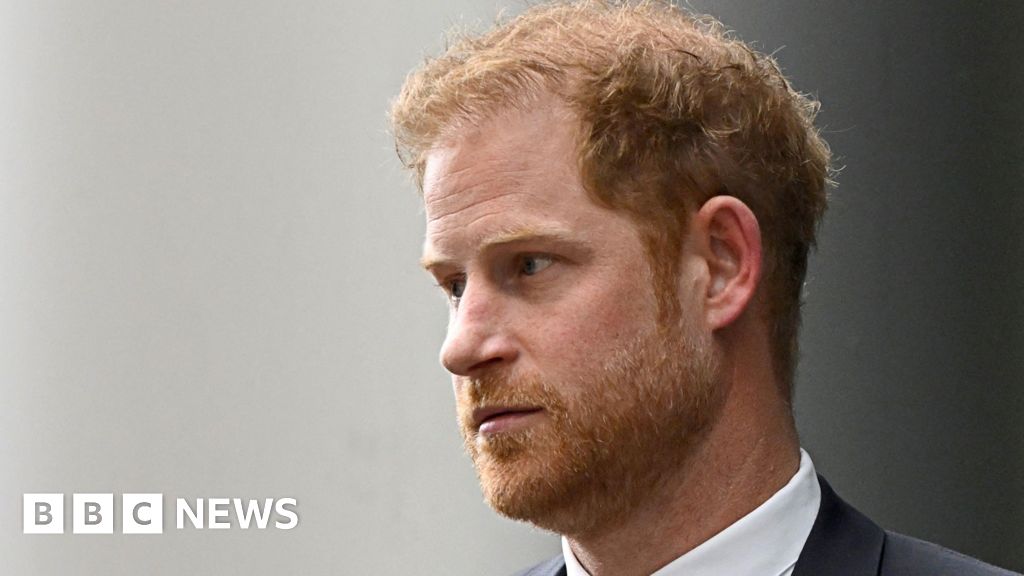ARTICLE AD BOX
By Christian Brooks and Cameron McAllister
BBC reporters
Image source, Nintendo
Image caption,Kirby celebrates its anniversary on Wednesday, after 30 years of being one of the most family-friendly faces in gaming
The outrage among parents and politicians caused by video games such as Mortal Kombat, Wolfenstein 3D and Night Trap made 1992 arguably one of the most controversial years in video game history.
However, it was also the same year that birthed one of the gaming world's most family-friendly faces: Kirby.
The unique pink ball with big eyes is still starring in titles that top the charts, 30 years after the original game's release.
For Eliza Sharp, founder of online Kirby fan account Kirby Informer, the character has stood the test of time because his games have been so distinctive from the competition.
"Every Kirby game has its own little gimmick, but it makes each different and unique from the next," she says. "It pulls me in and makes me excited for the next title in the series."
These have included a robotic suit or the character teaming up with animal friends such as a hamster named Rick.
Eliza's introduction to the franchise came through her older brothers' copy of Kirby: Canvas Curse on the Nintendo DS and says she "basically fell in love" with the character from the beginning.
“The earliest Kirby game I recall playing is Amazing Mirror! I'm not sure if my young self ever completed it the first time around, but I spent plenty of time just exploring different areas and it was a great introduction to the series! Shoutouts to Rainbow Route” @Akfamilyhome pic.twitter.com/bRF1GBRrMW
— Kirby Informer (@KirbyInformer) April 25, 2022The BBC is not responsible for the content of external sites.View original tweet on Twitter
Kirby is popular for a multitude of reasons, ranging from its music and family appeal to the variety and consistency of the games over three decades. Plus, as Negative World noted: "Kirby has a great design. He's expressive, iconic, instantly-recognisable, and easy for kids to draw. A perfect fit for the protagonist of a Game Boy game. He's simple, but it works extremely well."
Although Kirby games are generally the same all over the world, there is a stark difference in the marketing and promotion in some regions, particularly between Japan and America. The most notable change being that the character is usually smiling in the cover art of Kirby games in Japan, whilst in America, Kirby has an angry expression.
In an interview with Gamespot, Kirby: Triple Deluxe director Shinya Kumazaki explained that, for the Japanese version of the games, "the most powerful image of Kirby is that cute image, we think that's the one that appeals to the widest audience".
Kumazaki suggests the cute imagery of Kirby "brings in the most people to play" in Japan.
The game's developer, HAL Laboratory, is involved in all aspects of the games including the packaging, according to Kumazaki. However, Nintendo of America have the final say for the US market. Kumazaki says a "tough Kirby that's really battling hard is a more appealing sign of Kirby, so that's what we feature in the US".
The character was first seen in 1992's Kirby's Dream Land on the Nintendo Game Boy.
Image source, Nintendo
Image caption,The character was originally white, before it adopted the now-famous pink colour
Created by Masahiro Sakurai, the character was known as Popopo during development, with the famous design only being a placeholder at the time.
It's believed Super Mario creator Shigeru Miyamoto originally wanted Kirby to be yellow but Sakurai planned for the character to be pink.
When Kirby's Dream Land was released in North America and Europe, his colour had yet to be confirmed to Nintendo's colleagues in the West. And with the original Game Boy's visuals providing no clues, they didn't know what colour he was supposed to be.
They opted for white, which he appeared as on the original title's box art and game cartridge. By the time the next game in the series was released - Kirby had his now-famous colouring.
He was seen as pink in Kirby's Adventure, while Sakurai and team also added the crucial "copy" function in which he could mimic other characters' abilities.
Altogether there have been more than 30 Kirby titles over the past 30 years, cementing the character's status as a videogame icon. Creator Sakurai only directed a fraction of Kirby's back catalogue, however he voiced iconic antagonist King Dedede in Kirby 64: The Crystal Shards.
After making three Kirby games Sakurai went on to create another one of Nintendo's much-loved exclusive series, Super Smash Bros, which Kirby often features in.
Although most Kirby titles have been well received and praised for introducing new elements, some games in the series have been knocked for being too straightforward to complete.
With the inclusion of characters controlled by the computer who work alongside the player, Kirby Star Allies released on the Nintendo Switch in 2018, was criticised by reviewers such as Alex Huebner at iMore.
"While playing a classic Nintendo favourite is always nice, Kirby Star Allies seems to be a little too easy," Huebner wrote. "There are elements of this that make it interesting enough to keep playing, but I wouldn't consider it a top choice.
"The ease of the levels was disappointing. I was hoping for some classic Nintendo challenge, and instead, it was more like a hand-holding. While this may be great for young children playing, it doesn't give much to long-time Kirby fans who are more skilled."
Image source, Nintendo
Image caption,One critic said Kirby's "surgically deployed cuteness is more than enough to outstrip its relative emptiness"
Others felt that there was less to explore during levels compared to previous titles. However, the game was widely praised for its local multiplayer co-op element.
Following the release of the latest instalment - Kirby and the Forgotten Land on the Nintendo Switch in March 2022 - video game reporter Ash Parrish of The Verge felt that although fun, it too lacked any real substance with her likening it to cotton candy.
"There's a cotton candy allegory to be drawn here," she said. "Much like the carnival confection, Kirby is fluffy, cute, pink, and very sweet. It looks attractive and is so very fun to eat but the minute you put it in your mouth it dissolves. Gone so quickly, you barely noticed it was there.
"That's what it's like playing Kirby and The Forgotten Land; fun for the moment, but lacking any real substance. And that's okay - Kirby and the Forgotten Land's surgically deployed cuteness is more than enough to outstrip its relative emptiness."
In an interview with Game Informer at E3 in 2011, Miyamoto confirmed that a US lawyer had partly influenced his decision when deciding the character's final name.
In 1984, John Kirby successfully defended Nintendo when Universal Studios took the company to court due to alleged similarities between King Kong and Donkey Kong.
Miyamoto, who got to know the lawyer during the lawsuit, said Kirby had been on a list of names that they were looking at for the character. When narrowing it down, the team enjoyed the idea of the two having a connection.
The other element to the name is that, according to Miyamoto, cute characters in Japan often had very soft-sounding names and he felt "Kirby" had harsh sounds to it.
The legendary game designer recalled how he found the juxtaposition of a cute character with a harsh-sounding name "very funny" and so, Kirby was born.
Image source, Nintendo
Image caption,Various characters have been introduced to the series throughout the last three decades
Over the years, the series has expanded beyond video games with an anime television show called Kirby: Right Back at Ya!, along with several comic books series.
Eliza feels Kirby is definitely like no other video game protagonist and that the character had a fairly big impact on her while she was growing up.
"I'd play as him in Smash Bros as much as I possibly could, try and play my brother's games and play anything that had Kirby in it," she recalls. "Overall, he would just make me happy and he would be my safe place."
With competitive sales figures and generally positive reviews, Kirby's latest title in the series has stood its ground against the other big releases in the first quarter of 2022, such as Horizon: Forbidden West and Elden Ring.
That suggests one of gaming's oldest characters is still as versatile and loved as ever. However, in an increasingly competitive landscape, Kirby will have a tough battle ahead to remain popular and engaging for another 30 years.

 2 years ago
156
2 years ago
156








 English (US)
English (US)